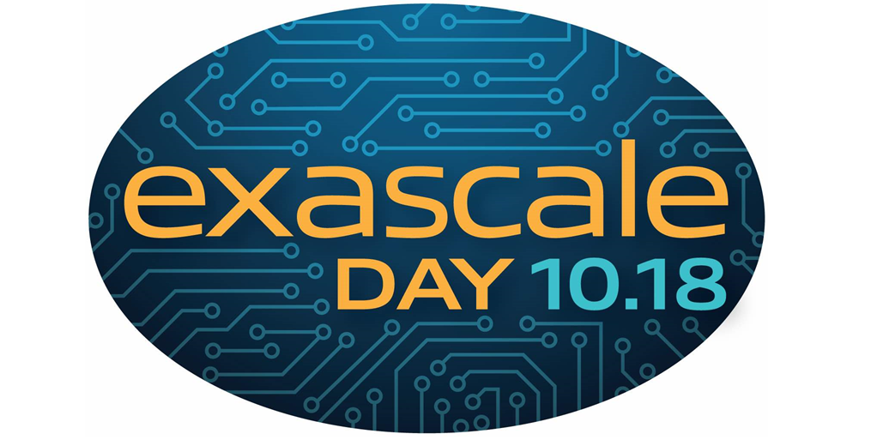In this special feature from Scientific Computing World, Tom Wilkie writes that France’s will get a new Bull supercomputer computer that will move Europe closer to exascale.
 Atos, the multinational digital services company, has signed a contract with the French Alternative Energies and Atomic Energy Commission, the CEA, to supply Tera1000, a 25 Petaflop Bull supercomputer intended as a forerunner to Exaflop computers by the end of 2020.
Atos, the multinational digital services company, has signed a contract with the French Alternative Energies and Atomic Energy Commission, the CEA, to supply Tera1000, a 25 Petaflop Bull supercomputer intended as a forerunner to Exaflop computers by the end of 2020.
The announcement signals that that both the French and the US Governments appear to have been thinking along similar lines on how they can use procurement contracts to encourage the development of next-generation technologies that might open the way to Exaflop computers. The use of procurement in the development of supercomputing was analyzed on this site by Tom Wilkie in How history will guide us to exascale.
One of the major technological challenges is to limit the electricity consumption of such a machine. To this end, the CEA, which is responsible for French nuclear weapons design as well as civil nuclear power, decided to apply an early methodology of co-design with Bull as the industry specialist. (The CEA’s original nuclear remit has subsequently been extended to include research and development into other energy sources.)
The contract stipulates that a preliminary machine should be supplied to the CEA’s Military Applications Division (DAM) in 2015. This would offer a similar computation capacity to DAM’s existing Tera100, but would use five times less electricity.
Tera100 has been operating since October 2010, delivering more than a Petaflop of supercomputing capacity for defence applications, at the CEA/DAM site in Île-de-France. Tera100 was the first Bull supercomputer to break the Petaflop ‘barrier’ and the first such machine to be designed and built in Europe. The first component of the new, more energy-efficient system was delivered on 14 April 2015.
The architecture of the second phase will pre-figure the design of the new generation of Exaflop supercomputers for the 2020s. The prototype, which will be up and running by 2017, will have a computation capacity of 25 petaflops, and an electricity consumption 20 times lower than Tera100 with respect to capacity.
Designing nuclear weapons without testing
The new machines represent an extension to the Tera project, which was set up by the Military Applications Division of the CEA as part of its simulation program. The idea was to provide the simulation resources required for the design and guaranteed operation of nuclear weapons without testing.
Initially, three stages (2001, 2005 and 2010) were envisaged for Tera. At the end of 2001, the first stage, Tera-1, led to installation of a 5-teraflop supercomputer manufactured by HP. At the end of 2005, the second stage, Tera-10, led to the installation of a 60-teraflop supercomputer manufactured by Bull. Tera-100 was the third stage. Now, Tera-1000 will extend both the computational capacity and also the technology and software infrastructures.
Parallels with US policy
In November last year, the US Department of Energy, which is responsible for nuclear weapons design as well as civil nuclear power and other energy sources in the United States, announced the first two stages in its Coral procurement of next-generation computers. The Lawrence Livermore National Laboratory in California (which is also responsible for computing the design of nuclear weapons without recourse to actual testing) and the Oak Ridge National Laboratory (which is civilian research establishment) are to receive machines from a consortium involving IBM, Nvidia, and Mellanox. More recently, Cray and Intel were nominated to provide a machine for the Argonne National Laboratory. The Coral machines, however, will be more powerful than the CEA computer – at 150 to 180 Petaflops.
Partners in design
Philippe Vannier, Executive Vice-Chairman Big Data & Security and Chief Technology Officer at the Atos Group, said: ‘This forms part of our exascale programme, which seeks to develop a new generation of supercomputers by the year 2020, with Exaflop performance, i.e. more than one billion billion operations per second, with a major reduction in electricity consumption.’
François Geleznikoff, Head of the CEA’s Military Applications Division, said: “The CEA/DAM team has been the driving force behind R&D for high-performance computing in France and Europe since the beginning of the noughties. Specifically, the DAM is helping to develop an ecosystem enabling it to produce a competitive, long-lasting, sovereign industrial offer of supercomputers in line with its own needs, on the basis of Atos’ high-performance computing technology, the only technology of its kind in Europe. To meet this objective, we have now signed the contract with Atos for the Tera1000 as the successor to two generations of Bull supercomputers produced to our entire satisfaction.”
The French Alternative Energies and Atomic Energy Commission is a public body established in October 1945 by General de Gaulle. A leader in research, development and innovation, the CEA is active in four main areas: low-carbon energies; defence and security; information technologies; and health technologies. The CEA’s Military Applications Division takes charge of defence and security missions. The DAM is responsible for the design, manufacture, through-life support, and dismantling of the nuclear warheads that equip France’s sea- and airborne deterrence forces. It is also responsible for the design and manufacture of the nuclear reactors and reactor cores on French Navy submarines and aircraft carrier. It assists the Navy with in-service follow-up and through-life support for these reactors.
This story appears here as part of a cross-publishing agreement with Scientific Computing World.



